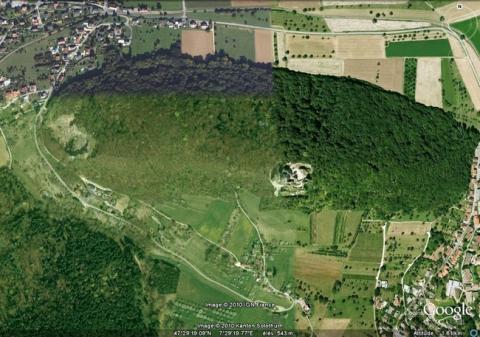Landskron
History and description
Founded at the end of the 13th century, the Château de Landskron had the first modern upgrading carried out at the start of the 16th century. Besieged multiple times during the Thirty Years War, the castle became the property of Louis XIV in 1663. Vauban was tasked with modernising it following the siege of 1673, during the War of Holland, as a strategic site facing Switzerland. The modernisation included the addition of defensive redoubt to protect the access road, a covered way around the medieval castle and a glacis with two bastions and a curtain wall on the western flank. Two other redoubts were added to the west of the castle on the hill. As for the medieval keep, a floor was removed to accommodate an artillery platform and its thick walls housed a garrison of three hundred man. However, from 1684, during the construction of Huningue, the site declined in strategic importance. The construction got underway in 1690, during the war of the League of Augsbourg and continued during the 18th century.Current state
The modifications of Vauban, likewise the medieval castle, still remain despite the damage caused by the siege from 1813-1814 and the use of the site as a quarry in the 19th century. It is open to visitors since 1984, the Franco-Swiss association “Pro Landskron” has taken on the task of restoring the site and consolidated the work involved.
Landskron
Landskron
47° 29' 18.2626" N, 7° 29' 25.4356" E
![Landskron, plan de 1700 environ, dans Cartes des environs de plusieurs places entre la Moselle et le Rhin, [Paris], pl. 30, gallica.bnf.fr / Bibliothèque nationale de France. Landskron, plan de 1700 environ, dans Cartes des environs de plusieurs places entre la Moselle et le Rhin, [Paris], pl. 30, gallica.bnf.fr / Bibliothèque nationale de France.](/sites/default/files/styles/paragraphe_libre/public/images/plan_ancien-63.jpg?itok=zR-zOO8R)
